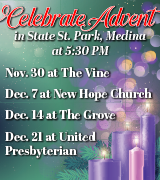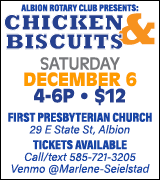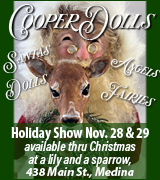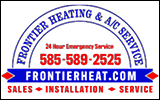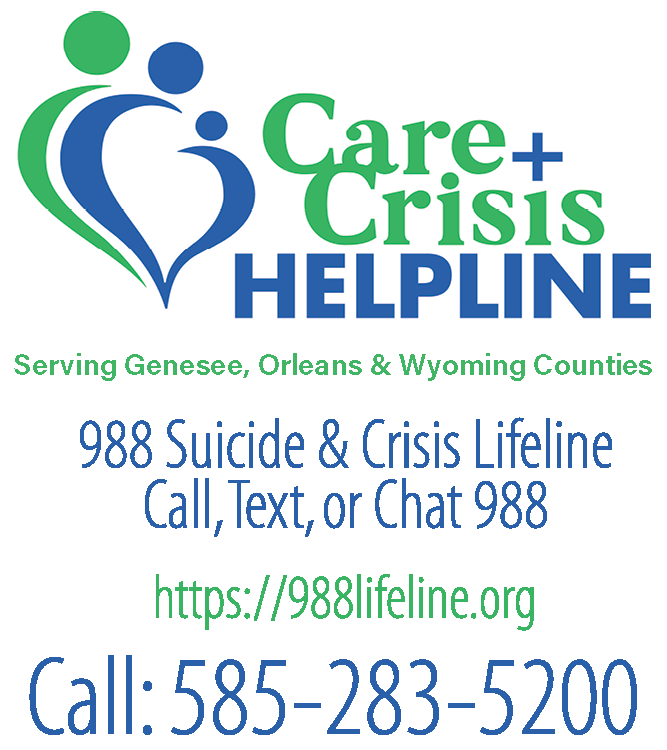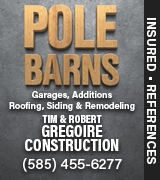AAA has advice for driving in snow and avoiding deer
First big snowfall, and deer season open this weekend
Press Release, AAA Western and Central New York

File photo by Tom Rivers: These deer are pictured on Nov. 20, 2014 when they were close to the road on the west side of Route 279 in Gaines, just south of Route 104.
Tragically, many animals are struck by cars each year. Although the injuries are not always fatal, animals can put a serious dent in your vehicle, if not destroy it completely.
November is especially dangerous, since it is the height of deer mating season. October and December are also dangerous. As the days get shorter, drivers are more likely to be on the road at dawn and dusk, which is peak time for animal activity. Animals may be more difficult to see as it gets dark earlier.
While any animal on the road is dangerous, deer are most often the cause of collisions. According to the Insurance Institute of Highway Safety, there are more than 1.5 million deer-vehicle collisions each year, resulting in 150 occupant deaths and tens of thousands of injuries. In New York State last year, AAA Insurance policyholders had a total of 136 animal-related auto claims with an average cost of $3,484 per claim.
“Although deer and other animals are unpredictable, and you never know when one might dash in front of your vehicle, there are actions you can take to help prevent an accident or reduce the damage from an animal collision,” said Steve Seitz, Insurance Manager with AAA Western and Central New York.
AAA Tips to Avoid an Animal Collision:
- Keep your eyes moving back and forth. Continuously sweep your eyes across the road for signs of animals and movement. While the most likely accident would be caused by an animal darting in front of you, one might also hit you by running into the side of your car.
- Be especially attentive in early morning and evening. Many animals, especially deer, are most active during prime commuting hours – roughly 5 a.m. to 8 a.m. and 5 p.m. to 8 p.m.
- At night, use high beams when there’s no oncoming traffic. Your brights can help you spot animals sooner. The light reflecting off their eyes may also help reveal their location.
- Slow down and watch for other deer to appear. Deer rarely travel alone, so if you see one, there are likely to be one or several more nearby.
- Honk your horn with one long blast. A long blast on your horn may frighten large animals, such as deer, away from your vehicle. The Insurance Information Institute (I.I.I.) advises against relying on devices such as deer whistles and reflectors, which have not been proven to reduce collisions with animals.
- Use brakes if impact is imminent. If an animal is in your path, stay in your lane. Swerving away from animals can confuse them so they don’t know which way to run. It can also put you in the path of oncoming vehicles or cause you to crash into objects on the side of the road.
- Always wear a seatbelt. According to the I.I.I., the chances of getting injured when hitting an animal are much higher if you don’t have your seatbelt on.
- Don’t go near a wounded animal. A frightened and wounded animal can be unpredictable. If it’s in the middle of the road and blocking traffic, call the police immediately.
AAA Offers Winter Driving Advice
AAA Western and Central New York said 24 percent of weather-related crashes occur on snowy, slushy, or icy roads. The top three winter driving tips include slowing down, increasing the space between yourself and other vehicles, and braking, THEN turning.
Additional important notes: Stay with your car and remain calm, should you find yourself in an emergency situation. If you are in an emergency situation, call 911. If you get stranded in your car, keep your tailpipe clear of snow to ensure proper ventilation and keep your window cracked open a bit until help arrives.
Tips for driving in the snow:
- Accelerate and decelerate slowly. Applying the gas slowly to accelerate is the best method for regaining traction and avoiding skids. Don’t try to get moving in a hurry. Remember: It takes longer to slow down on icy roads.
- Increase following distances. The normal dry pavement following distance of three to four seconds should be increased to eight to ten seconds. This increased margin of safety will provide the longer distance needed if you have to stop.
- Know your brakes. Whether you have antilock brakes or not, the best way to stop is threshold braking. Keep the heel of your foot on the floor and use the ball of your foot to apply firm, steady pressure on the brake pedal.
- Don’t stop if you can avoid it. There’s a big difference in the amount of inertia it takes to start moving from a full stop versus how much it takes to get moving while still rolling. If you can slow down enough to keep rolling until a traffic light changes, do it.
- Don’t power up hills. Applying extra gas on snow-covered roads may only result in spinning your wheels. Try to get a little inertia going before you reach the hill and let that inertia carry you to the top. As you reach the crest of the hill, reduce your speed and proceed downhill as slowly as possible.
- Don’t stop going up a hill. It’s difficult to move up a hill on an icy road. If possible, get your vehicle moving on a flat roadway first before taking on a hill.
- If possible, stay home. If you really don’t have to go out, don’t. Even if you can drive well in the snow, not everyone else can.
Return to top


















